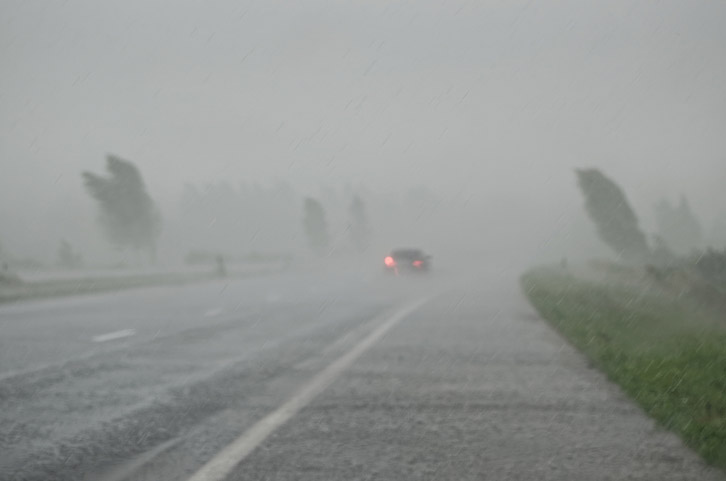
Getting Traction – Winter Weather Driving
 It’s no secret that driving in the winter can be a nightmare, and it seems every year motorists need to relearn what it takes to remain prepared and safe on the road. But the truth is, traveling in snow, ice, fog or soaking rain can be a major challenge for even the most experienced motorists. According to the Department of Transportation, there are approximately 1.2 million weather-related vehicle crashes every year – leading to, on average, nearly 6,000 fatalities and over 445,000 injuries. It’s clear we could all use a little refresher when it comes to navigating those slick roads this winter.
It’s no secret that driving in the winter can be a nightmare, and it seems every year motorists need to relearn what it takes to remain prepared and safe on the road. But the truth is, traveling in snow, ice, fog or soaking rain can be a major challenge for even the most experienced motorists. According to the Department of Transportation, there are approximately 1.2 million weather-related vehicle crashes every year – leading to, on average, nearly 6,000 fatalities and over 445,000 injuries. It’s clear we could all use a little refresher when it comes to navigating those slick roads this winter.
Know Before You Go Tips
Whether you are driving school bus, a fleet vehicle or your personal car, be sure to ready your vehicle before you hit the road. Check your vehicle’s battery, wipers, coolant, tires and other systems that are most affected when the temperature drops. Make sure your tires have good tread. When you know your vehicle is ready for the road, clear any snow, ice or dirt from the windows, forward sensors, headlights, tail lights and backup camera.
Check the weather forecast and road conditions. Your drive will be much safer if you know what’s ahead.
CHANGE YOUR PLANS if travel is hazardous.
Stock your vehicle with a winter supply kit:
- mobile phone and charger
- batteries
- blankets
- shovel
- flashlight & extra batteries
- first-aid kit
- high-calorie
- non-perishable food
- sack of sand for traction
- windshield scraper and brush
- battery booster cables
While on the Road – Winter Driving Tips
Stay alert while driving. Make sure you keep your gas tank over half full and keep a close eye on road conditions, which can change rapidly. On road trips, take breaks often so you can stay focused on the road. Drive slower than normal and leave more room between you and surrounding vehicles. DO NOT use cruise control, brake quickly or make sharp turns.
Focus on Safety – Tips to Protect You and Your Passengers
Accidents happen. Always wear your seatbelt and ensure everyone in your vehicle does the same. Make sure young children are in proper child restraint systems, as required by law. If you’re involved in an accident, try to pull your vehicle off the road and use hazard lights, flares, reflectors or flashlights to warn other drivers. STAY OFF THE ROAD, dial 911, and wait for the police to arrive. Don’t text or make phone calls, speed, or drive under the influence of drugs or alcohol. These activities are always dangerous, but the risk is much higher in winter weather.
